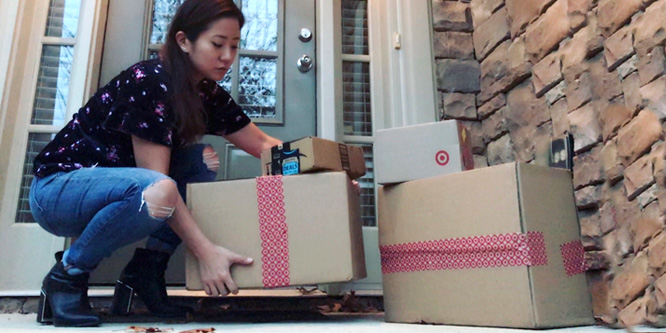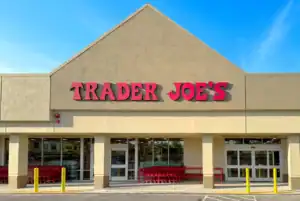
Photo: @hahnee12 via Twenty20
September 25, 2019
What makes consumers grumble most about returning online orders?
According to a global survey from Narvar, the three top complaints around online returns are having to pay for shipping, lack of communication regarding return status and not knowing when they will get their refund.
According to the online survey of 3,519 consumers in the U.S., U.K., France, Germany and Australia who returned at least one online purchase in the last year, the biggest gripe was “My refund took too long,” cited by 28 percent. That was followed by “I had to repackage the item,” 24 percent; “I had to keep checking to see if my refund had gone through,” also 24 percent; “I wasn’t able to track the package,” 13 percent; and “I had to wait in line,” 10 percent.
Other themes in the study:
Transparency: Among U.S. consumers, 32 percent want to see the returns policy on the product page and 24 percent on the home page. Thirty-five percent expect a confirmation email. Across all respondents, 16 percent are frustrated by needing to check on refund status, with 53 percent checking refund status daily.
Physical returns: Thirty-eight percent of overall respondents think it’s easier to return an item in-store, though only 10 percent made their last return in store. About half are willing to return in-store to reduce the environmental cost. Among other options, 21 percent want a drop box, like a post office box, or a way to drop off at a convenient location (pharmacy, grocery, or c-store). Seventeen percent are interested in a drop-off locker.
Bracketing: Fifty-six percent of overall respondents often “bracket” — buy multiple versions of an item with the intention of trying on at home and then return those that do not work. This practice leads to a small percent of shoppers comprising a disproportionate percent of returns. Those bracketing say they do so because retailers don’t provide enough information needed for the transaction.
Exchanges: Free return shipping and easy exchanges for different sizes, colors or items were found to encourage respondents to make an online exchange rather than ask for a refund.
Discussion Questions
DISCUSSION QUESTIONS: What’s your own biggest beef with the online returns process? Which common shortfalls in the online returns experience should be easy for retailers to resolve? Which will be difficult?
Poll
BrainTrust
Gene Detroyer
Professor, International Business, Guizhou University of Finance & Economics and University of Sanya, China.
Brian Cluster
Insights Consultant
Shep Hyken
Chief Amazement Officer, Shepard Presentations, LLC
Recent Discussions







The complaints listed in the article are the common ones we all hate, but the problem is that all of them involve cost. Setting up tracking and issuing refunds require staff, technology, and cost the company money. Add to that free shipping, and that cuts further into the profit margin. So who pays? The customer! The problem is that online shopping has become so competitive with discounted prices and free same-day shipping. As a result, it puts enormous pressure on smaller companies to make a decent profit. The customer today rules and wants everything and, for the most part, is getting everything. Unfortunately, many customers are just too lazy to return an item to a store or even bother to pack up the merchandise correctly and return it on time. As technology improves and as we see more use of drones regularly, I would expect that the return process will improve. It’s just going to take time, and customers are going to have to be patient.
“Many customers are just too lazy to return an item to a store” — the purpose and success of online is that people don’t want to go to the store.
It’s true that when shopping online the purpose is not having to go to the store. However, it makes sense and is convenient for shoppers who are fine doing it to return an item purchased online to a store. And if the retailer is smart, they’ll provide an incentive/offer for customers that do.
I agree. For a shopper, a return is “found money.” Why not spend it again?
I also agree. Returning the purchase to the store does not take any more time than going to a Post Office or UPS store. You get your credit almost instantly compared to the longer wait by returning to the shipper.
Great point!
I find complaints about having to repackage items rather pathetic. What do consumers think they should do – pop an unpackaged sweater in the mail box and cross their fingers that it reaches its destination? The truth is, if they need to return products consumers will always need to put in some effort even if this is only going to a store to process a return.
I have more sympathy with other areas like transparency and being able to track the return. Many retailers could streamline these processes.
I agree! For me it’s much easier to pop an unwanted item into an envelope and send it back. As far as transparency goes, it would be simple for retailers to send a note to consumers when the item has been received and when a credit has been issued.
Actually, virtually all of these issues can be solved — and more and more online merchants are figuring out how to do it. You just need to prioritize them and address them. This truly is not rocket science.
The more often a consumer shops online, the more accustomed that consumer gets to having things done for him/her. Having to take returns to a drop place is a trip consumers didn’t have to make to buy the product, that is a problem. Most consumers may not know how to call FedEx or UPS for a pickup at home. Facilitating pick up of returns at the consumer’s address of choice might smooth out the returns process. Lack of proper return labels or clear, simple instructions are probably the next highest point of friction. The more units a consumer orders with the intent of only keeping one, the more the problems with the return are exacerbated.
Online shopping provides so much convenience. Browse and buy from your phone, tablet or computer, search hundreds if not thousands of options to find what you want without leaving your home or office, read reviews to see what customers like you liked or didn’t like. Having to return an item disrupts all this convenience. Finding a box or envelope of the original one won’t work. Printing (and paying) for shipping labels. Getting to the post office or UPS store. Finding a replacement item and waiting for it to be sent out and hoping it will work better. All of these pieces can be addressed by online retailers, which some do better than others. The ones who master making returns more convenient will win over a loyal customer base.
My two biggest complaints about online returns are 1.) paying for shipping on returns from some companies and 2.) waiting in line when I return in the store. Returns have always been a challenge for online retailers from a customer service and cost perspective.
I not a bracket purchaser, but that is definitely a problem for online retailers that digs into profits. Making it easier for consumers to choose the correct size and/or the best model/style for their needs may help reduce bracketing.
I’ll preface my answer by admitting everything eventually works out.
To receive prompt refunds for my returns, I need to put each item in an individual box with its respective product label on the exterior. However, last week I returned three items in a single box; today I have to call to ensure the retailer refunds me for all three items (vs. just the one item that corresponds to the label on the exterior).
If I didn’t need to follow up (or hoard cardboard boxes), making returns would be almost hassle-free.
Many merchants have return issues and somehow they find their niche way to create frustration. It’s definitely a two-way street where consumers have to have a general understanding of the mechanisms of returns and not expect that not wanting an item is grounds for returning something in any means they see fit.
My biggest gripe is Home Depot. I support them with larger than average expenditures, very often via BOPIS. About a third of the time BOPIS returns to a store go wrong — very wrong. They have two different systems whereby item numbers or UPC codes don’t match up, in-store and online. That confounds less/poorly trained in-store staff, creating a nightmare. The last time I returned a BOPIS item the (new) associate kept telling me that he could not find the order in the system despite me handing him the detailed receipt, which had the order number. He gave up and looked at me as if I could not make the return. Other associates have come up with stories like “maybe it’s a special order.” At another location, a very capable associate handled a return but vented about the two system challenge.
Bottom line: logical systems, well-trained associates, and very clear communications about return policies/requirements will go a long way to improving consumer experiences.
Checking with my wife, who does most of the online shopping, the spread of retailers who make it easy and make it hard is pretty wide. And for her, it is all about who makes it easy.
The best are Amazon, Zappos and Nordstrom. The worst are Macy’s, Anthropology and Amazon Marketplace.
Macy’s has made it so difficult that she is no longer a Macy’s shopper and has become a regular Nordstrom shopper, a retailer she had never used before.
Just like purchasing online, returning is all about time and convenience. That is the mantra today and any retailer who doesn’t recognize that will be a loser.
I kind of find myself in the minority here, I guess. I buy quite a bit online, and don’t see any agitation points in reference to returns for me to ponder. And Kohl’s has brilliantly solved a problem for many with Amazon dropoff in-store. It is brilliant because they get this online buyer into their store, if even only for 10 minutes. I believe one of the other BrainTrust comments hit the spot: people get so used to effortless buying and delivery that return activities seem like a burden.
Are these complaints or growth pains? It seems there are parallel learning curves evolving: one, online merchants are learning what works best, or at least what consumers hate most; and two, consumers are learning the least painful way to make returns.
We keep forgetting that, in the scheme of retail things, this hasn’t been a problem for all that long, and my bet is online retailers will figure out how to manage consumers’ expectations around returns way before brick-and-mortar retailers finally arrive at a permanent, effective solution to out-of-stocks. All of these problems are fixable, but it takes time to change consumer expectations and behavior.
It’s the guilt from all that cardboard — does it really get recycled in the end? Amazon has it right. I take the item (unpackaged) back to my local UPS store, they scan the QR code on my phone and I’m done. Hopefully they aren’t putting one item in a big cardboard box to return to Amazon and instead they repack multiple items (and labels) together. Since I always leave the store within about 30 seconds of walking in for this simple return, I guess I’ll never know — so I’ll just assume they are waste efficient.
Online has become synonymous with convenience while returns, in general, have been about special processing and handling. The article offers many of the common and valid consumer gripes, yet for me it’s about finding out post-purchase and receipt that the item is not returnable; even if it’s unopened and and the seal is unbroken.
Overall, consumers realize there is some effort involved in returning an item and as long as that effort does not include additional outlays, they’ll be satisfied. Just keep the process simple and clear for both your customers and employees, and do ensure your systems are friendly when selling and work even better after the sale.
My beef? Packaging and drop off. Stores are a far better place to return because I don’t have to worry about ensuring the product is packaged for shipment. Nor do I have to worry about the cost of return shipping.
That said, it’s a bit shocking that we still have to discuss this. But the ability of online-only investors to underwrite losses has extended the online-only mythology far beyond when we all knew it was a bust.
My biggest complaint about the online returns process is the fact that many retailers still don’t know how to package products for shipping. I recently purchased some laundry soap online from Amazon and when I opened the package only 50 percent of the soap was remaining. So my biggest beef is that there are some reasons for returns in online shopping that do not exist for the local store. Doing the mental calculations, the effort to repackage and send back the laundry soap and package it was just not worth it. Customer experience gaps remain in certain categories that online retailers need to address.
Grumbling happens up front – before they even realize they need to return something. The average consumer was dissatisfied with the product for whatever reason. I believe the real focus and highest value for retailers should be about preventing returns in the first place. In the case of bracketing, the customer already knows they will be returning stuff and for them any added effort is part of the cost. There’s no reason for retailers to encourage that behavior- unless it’s a business model of its own.
Having to pay for the return, having to take it somewhere to be shipped, and waiting for the refund are problems. We pay shipping and handling to get product to us so why do we have to pay for the return if we have to do the handling and take it somewhere to be shipped? There are some retailers that do a better job with returns and I will try to use those retailers if possible. If some can make the process easier, they should all be able to do the same.
Speed and convenience are more important to me. The best use of my time usually determines how I address this. In most cases, I will return the item to the store. It takes less time than the time needed to package and stand in line to ship it. It also gets my account credited faster.
Any of the points listed in the article, as well as the points brought up by our esteemed BrainTrust, fall into one category: inconvenience. As easy as we make a return — even the easiest returns — still require a little work from the customer. Some have made it easier than others. When brick-and-mortar retailers are willing to take online returns (for their items as well as others), it is another option, that may be convenient for some. It’s always good to give options. It’s important to educate the customer on the process, what to expect (refund), and more. Even with the effort the customer is willing to go through to make the online return, communicating important information, such as the item was received, the refund is being processed, etc., goes a long way in creating a better customer experience.